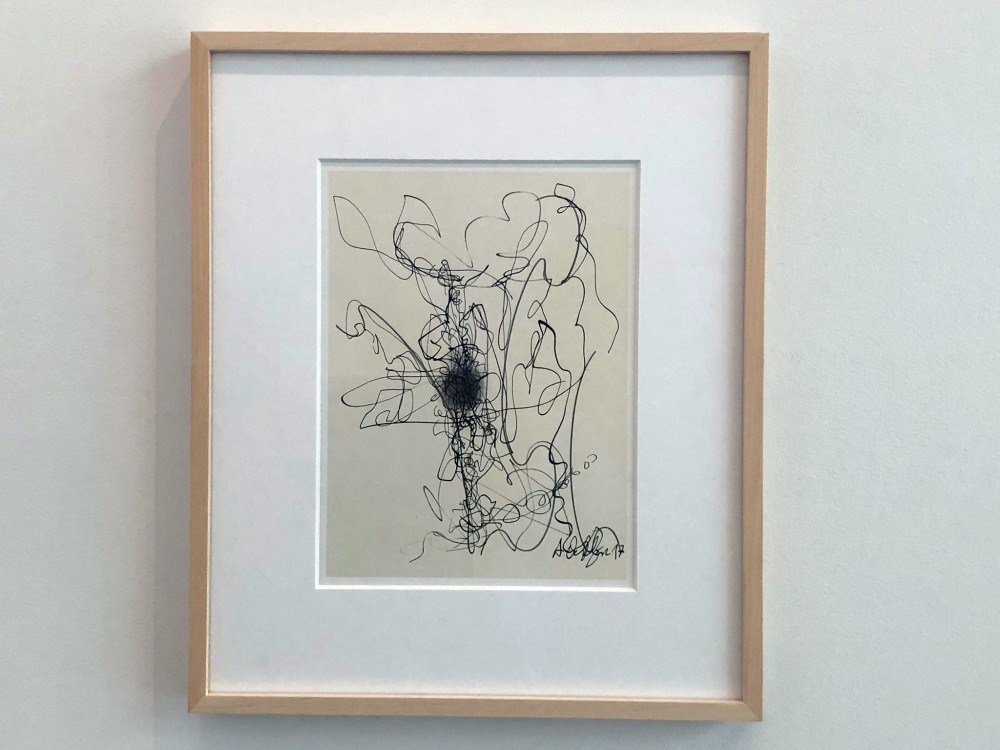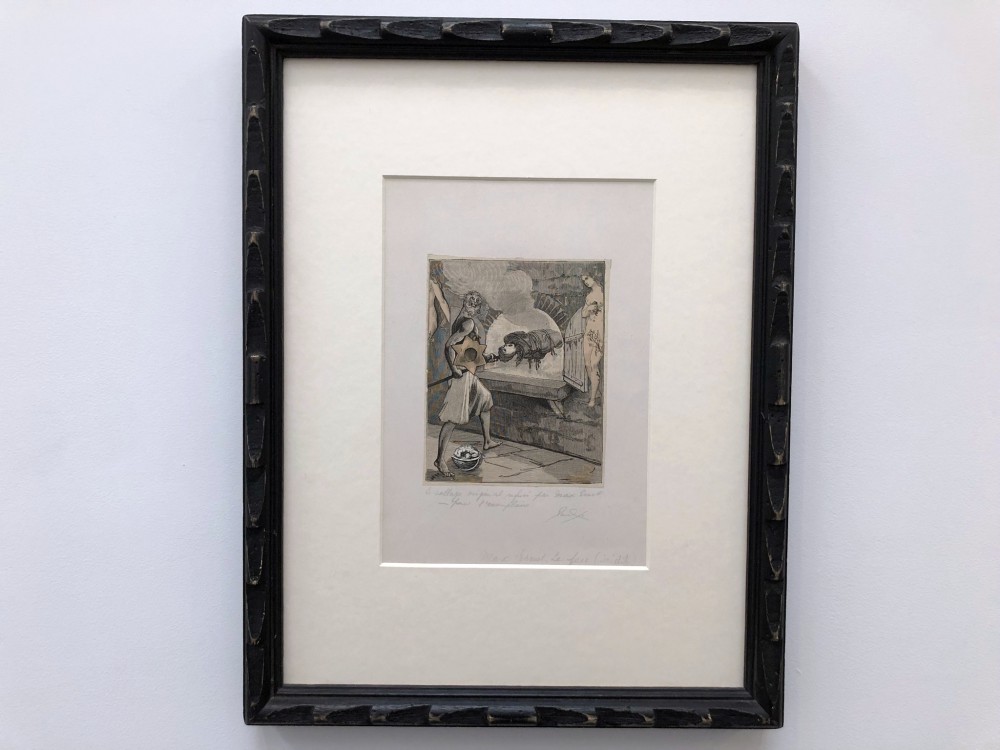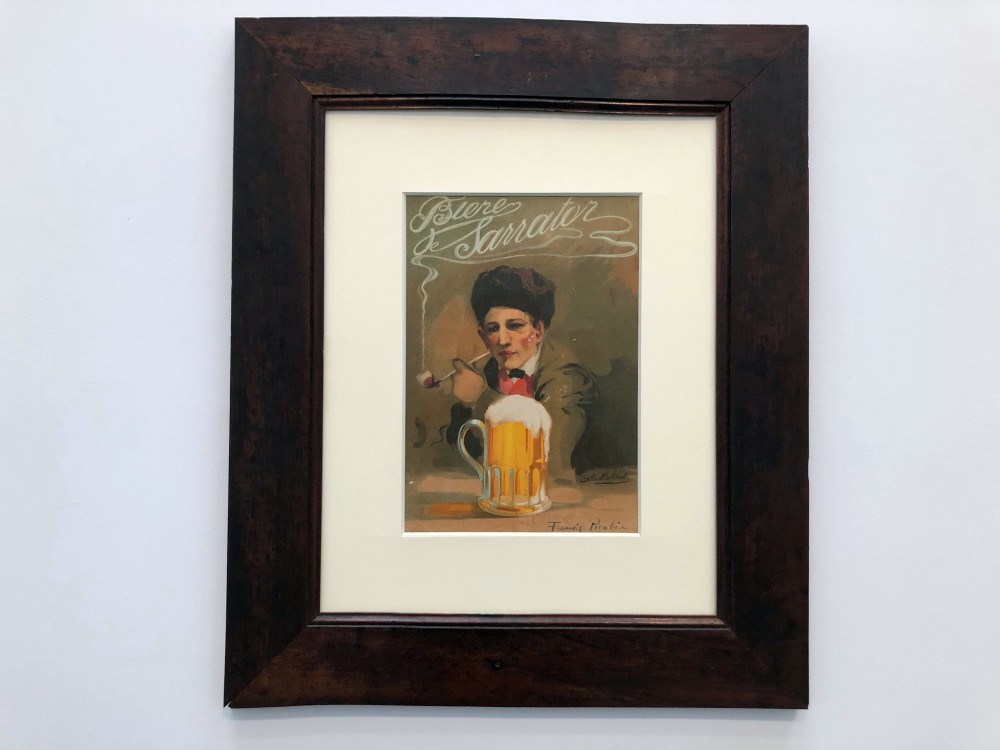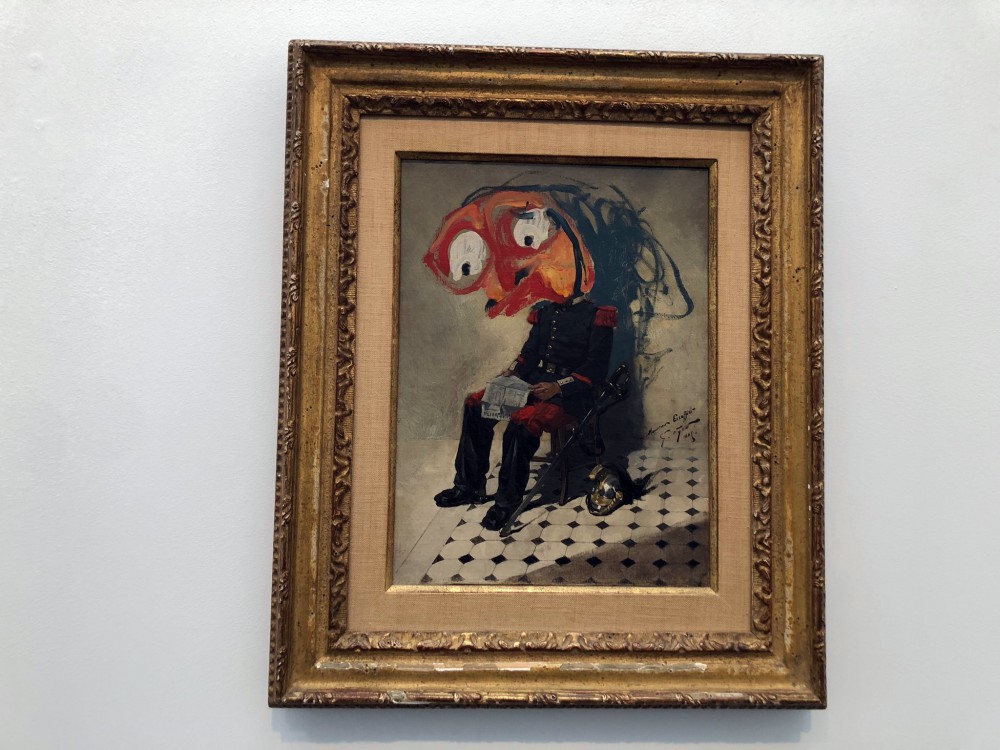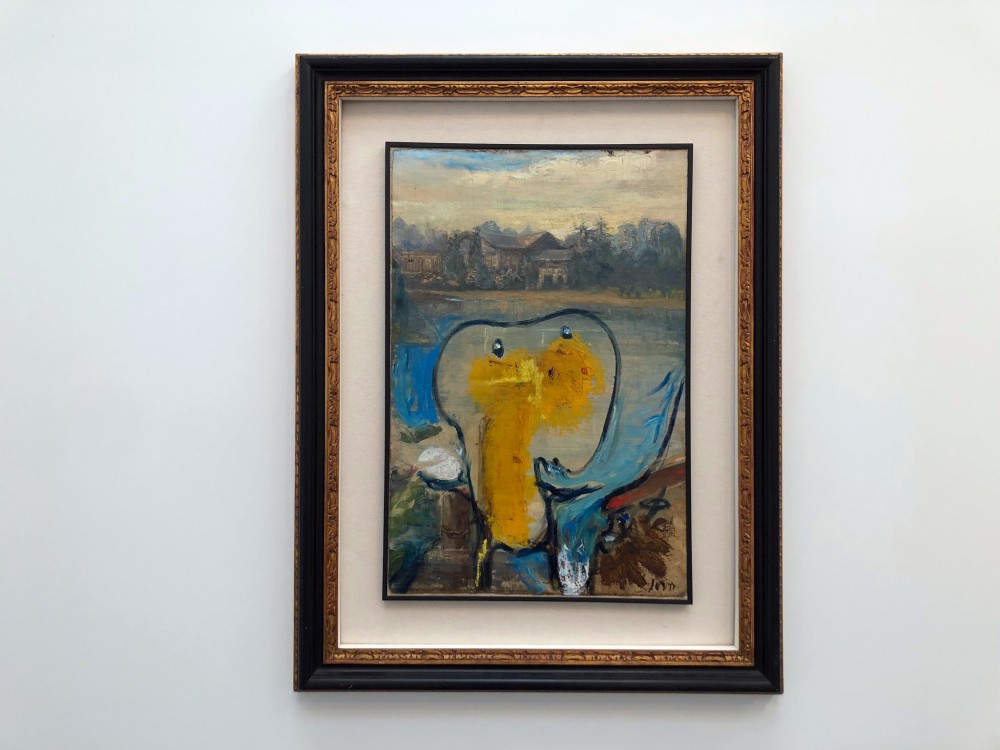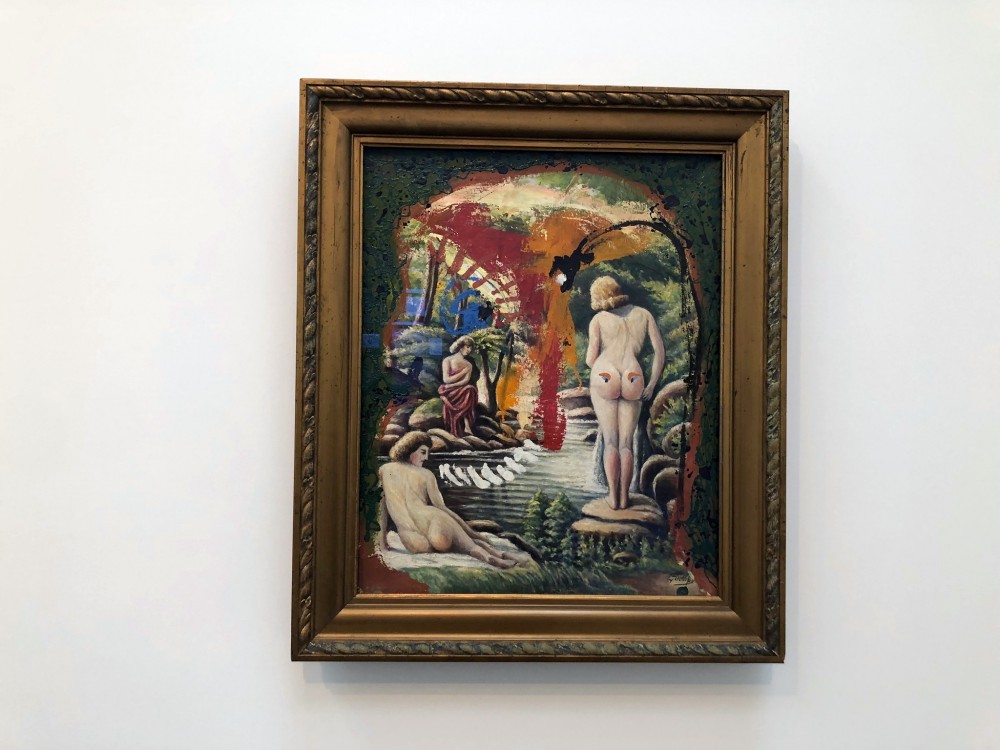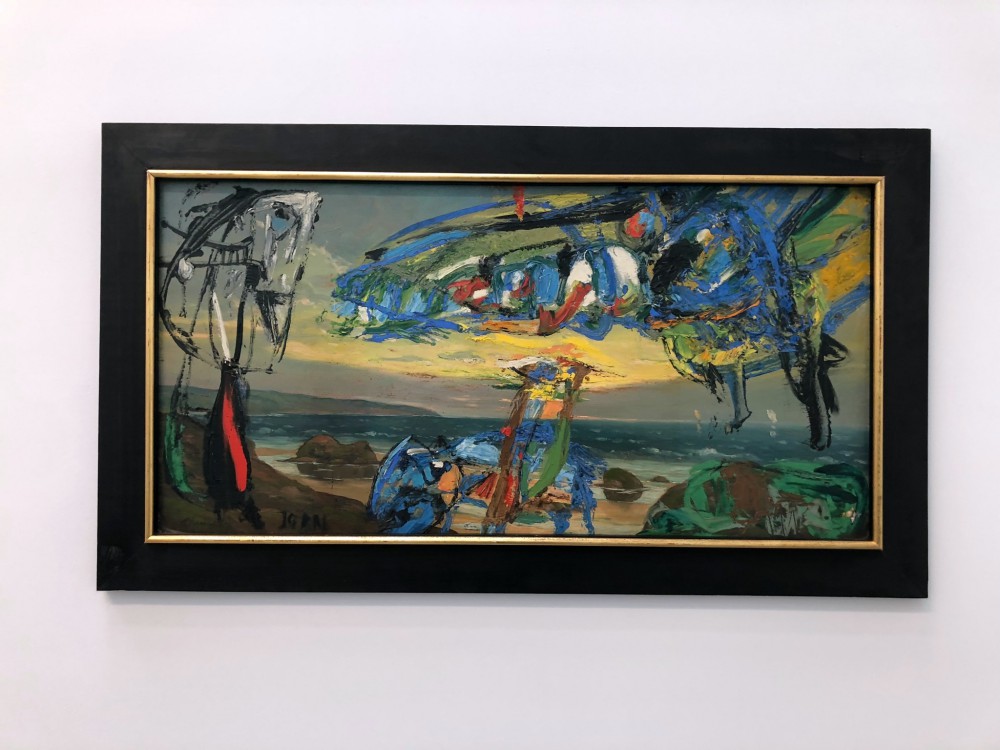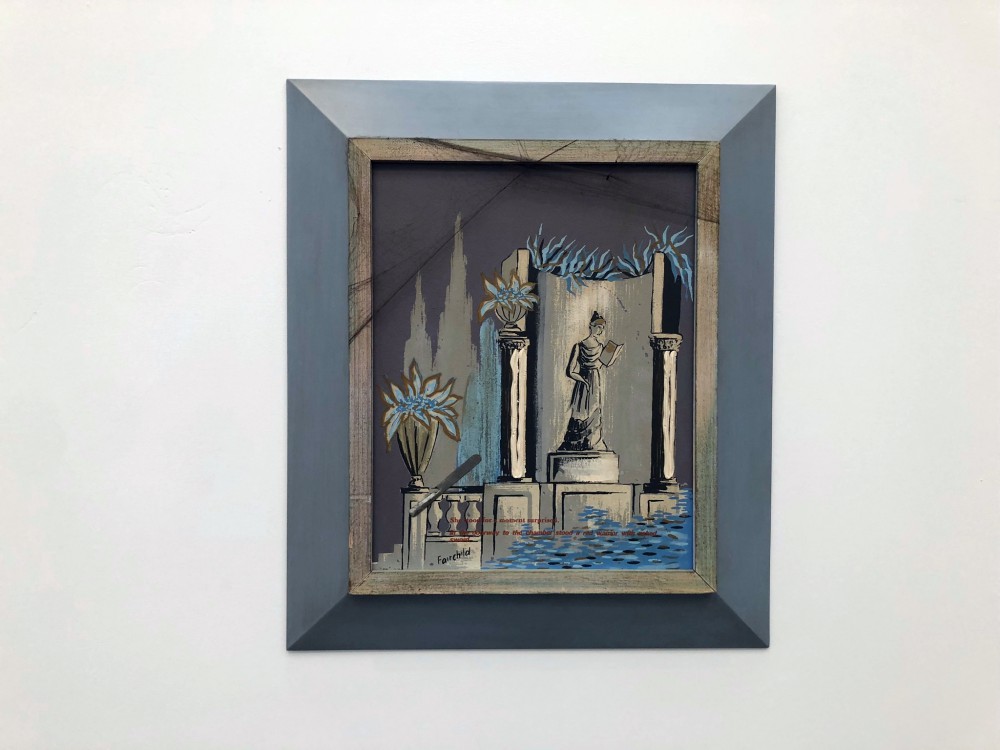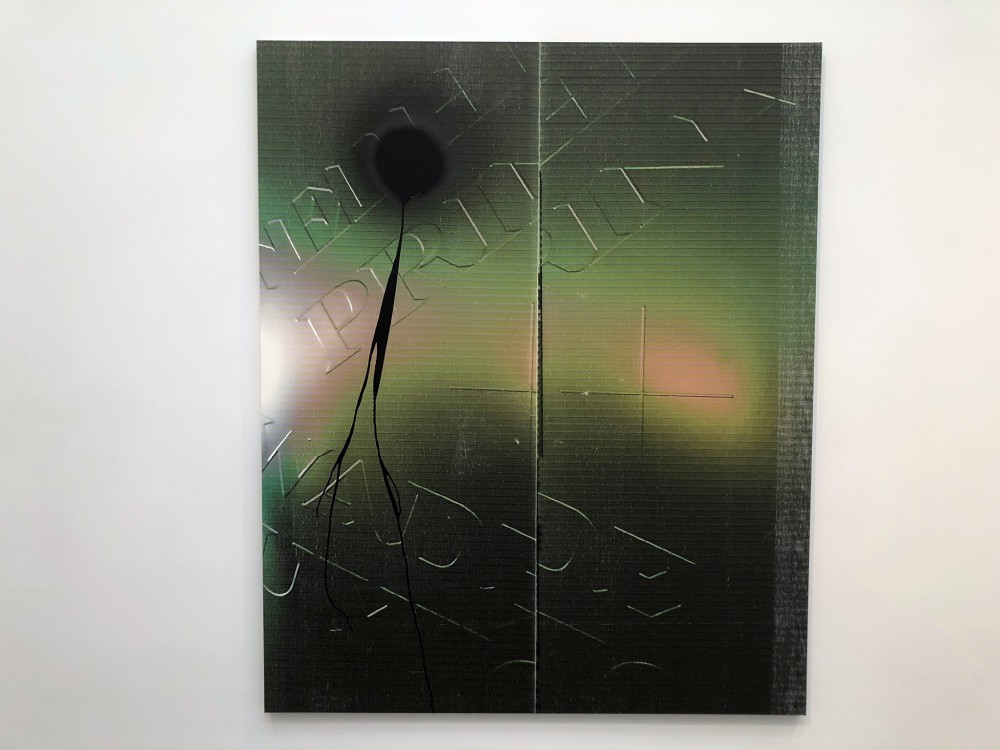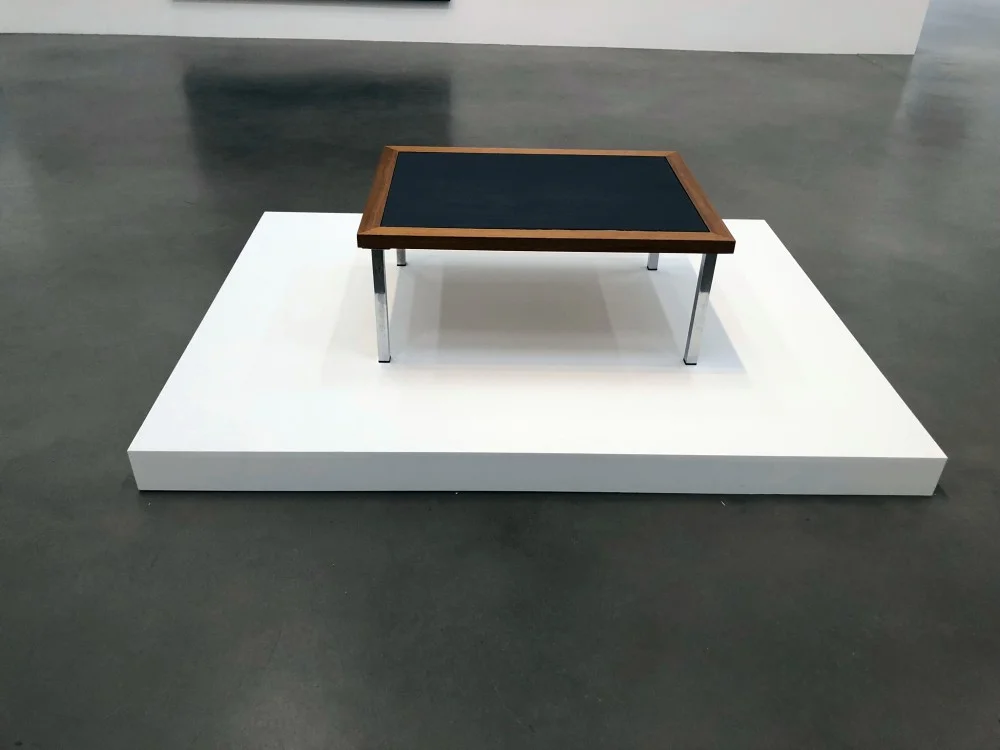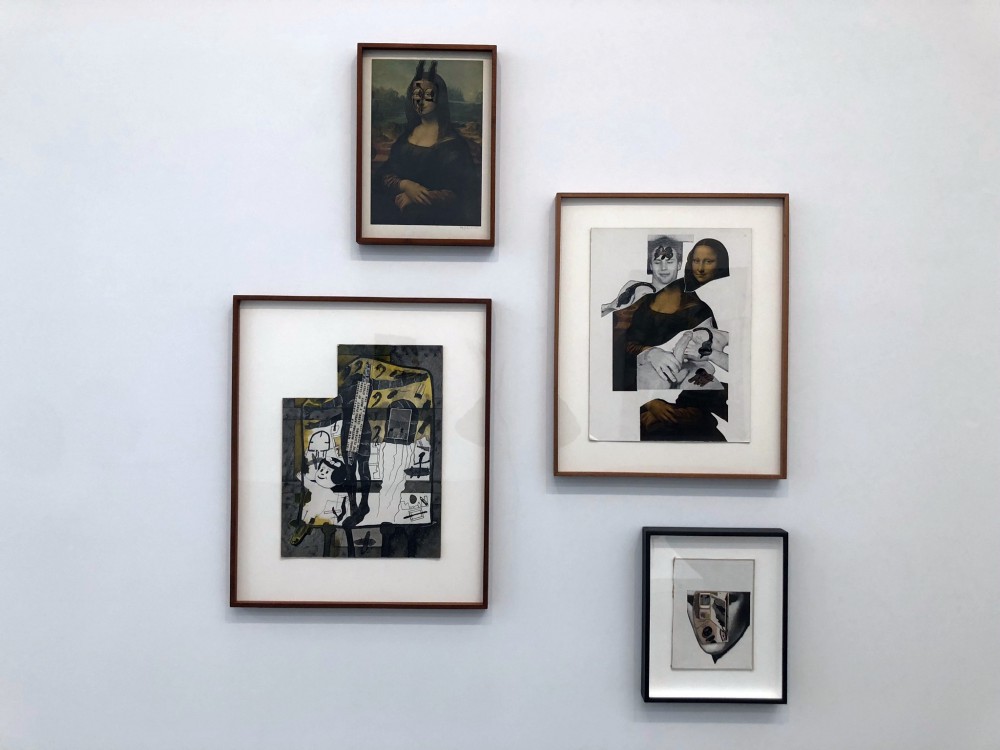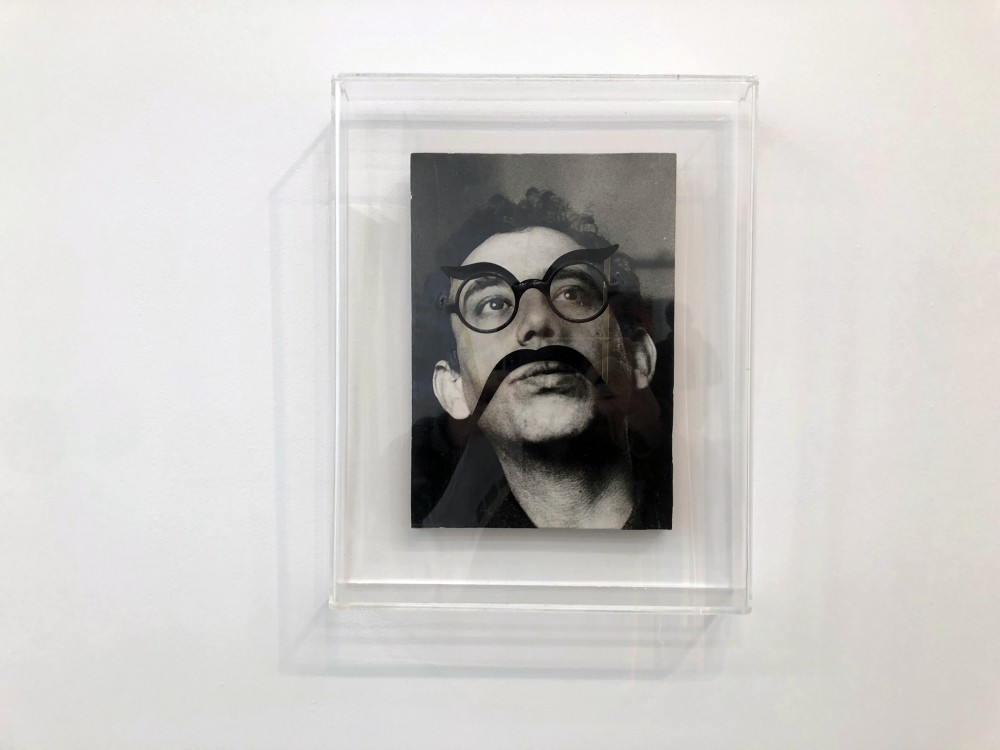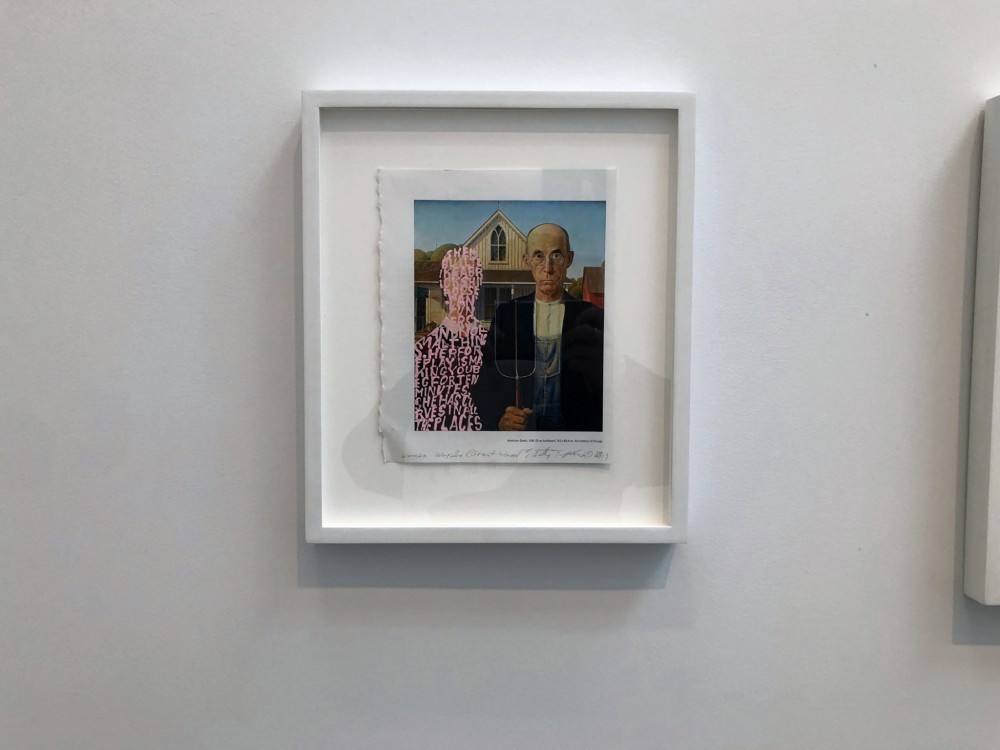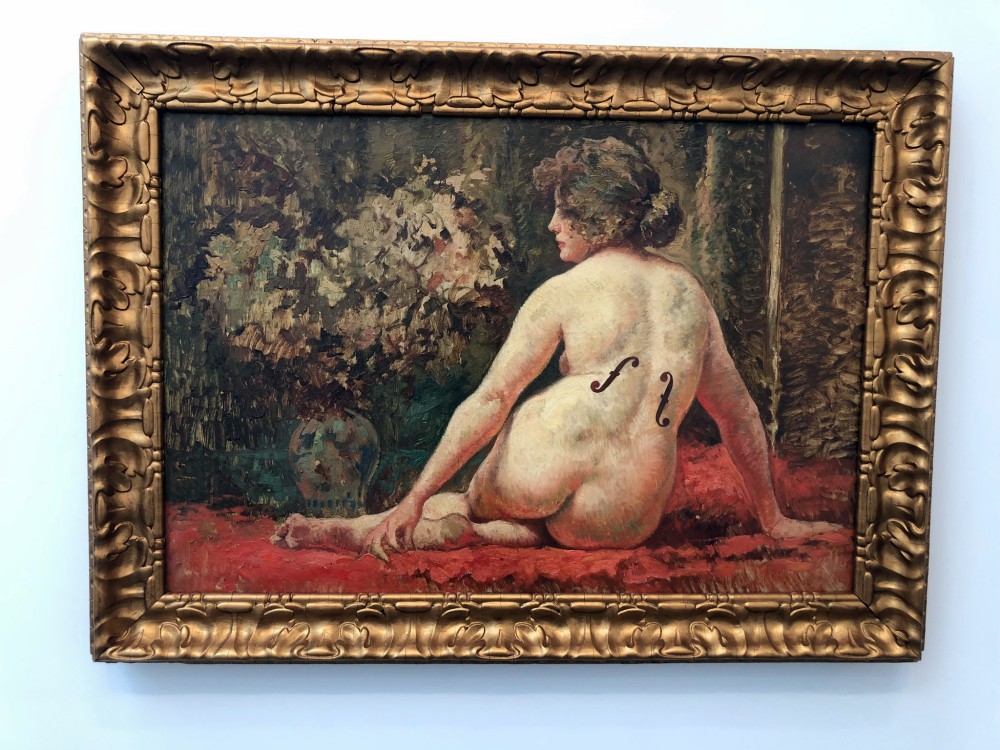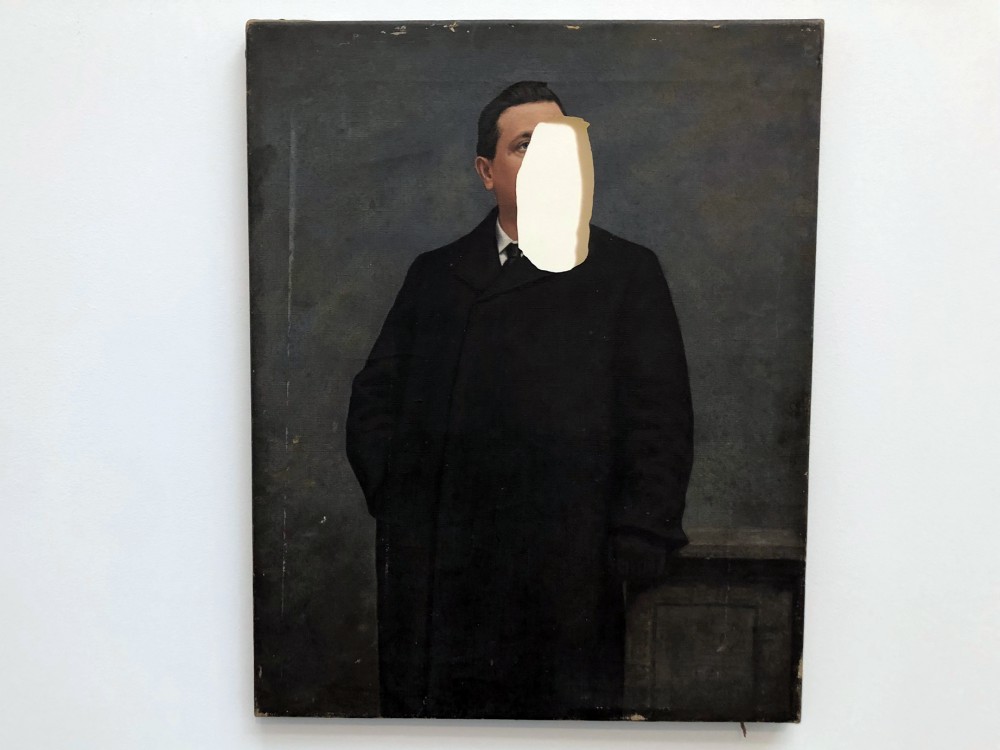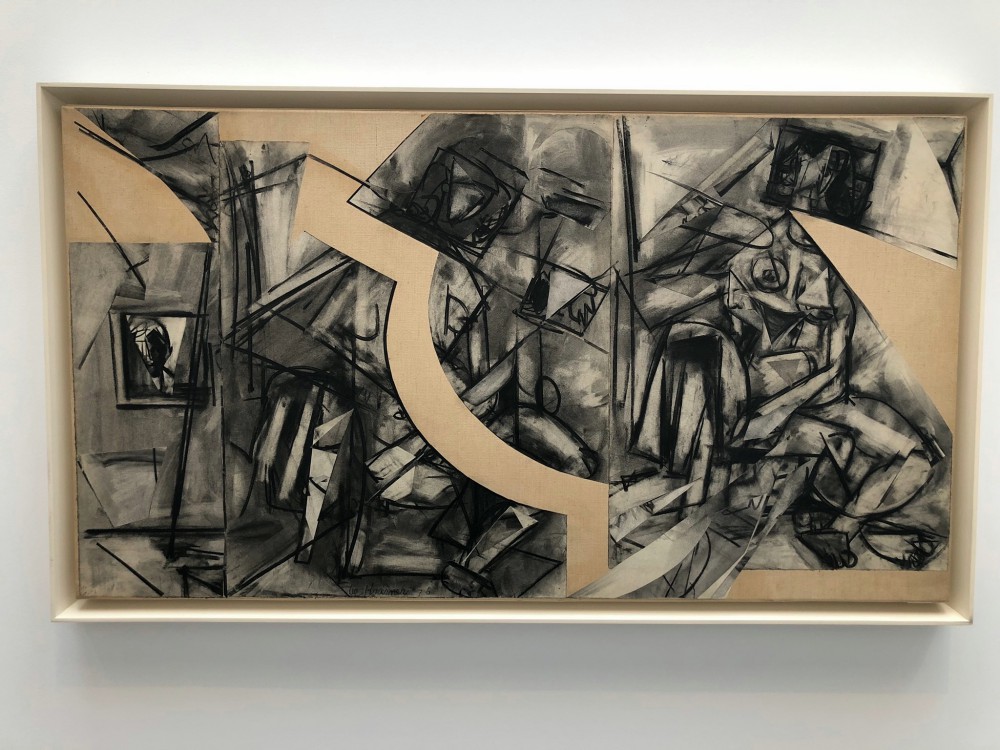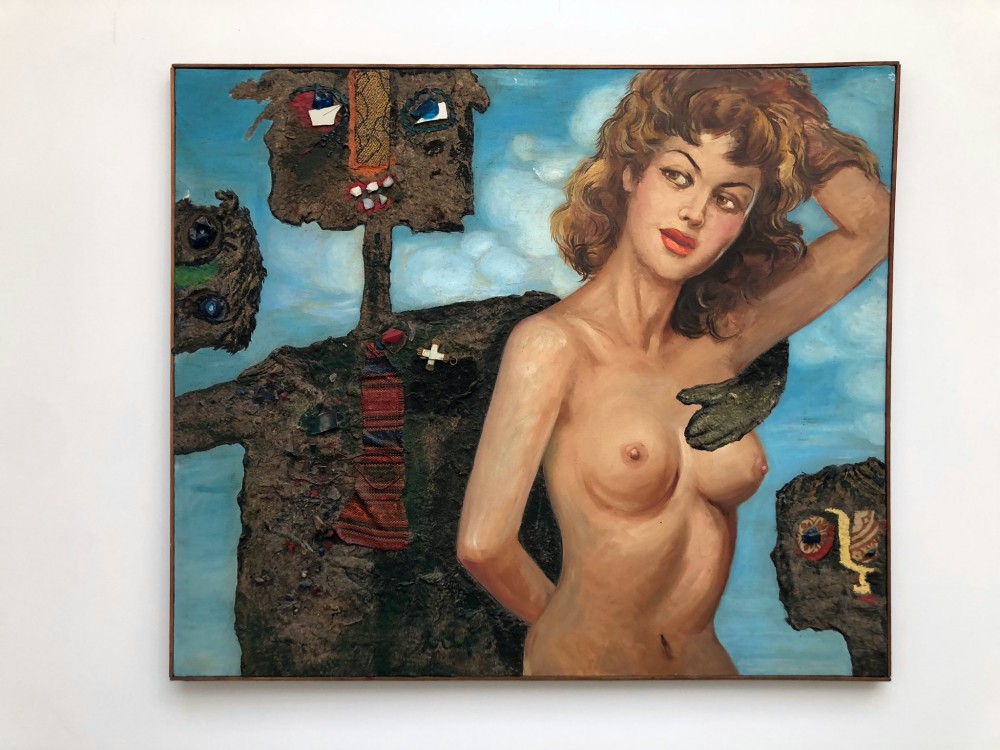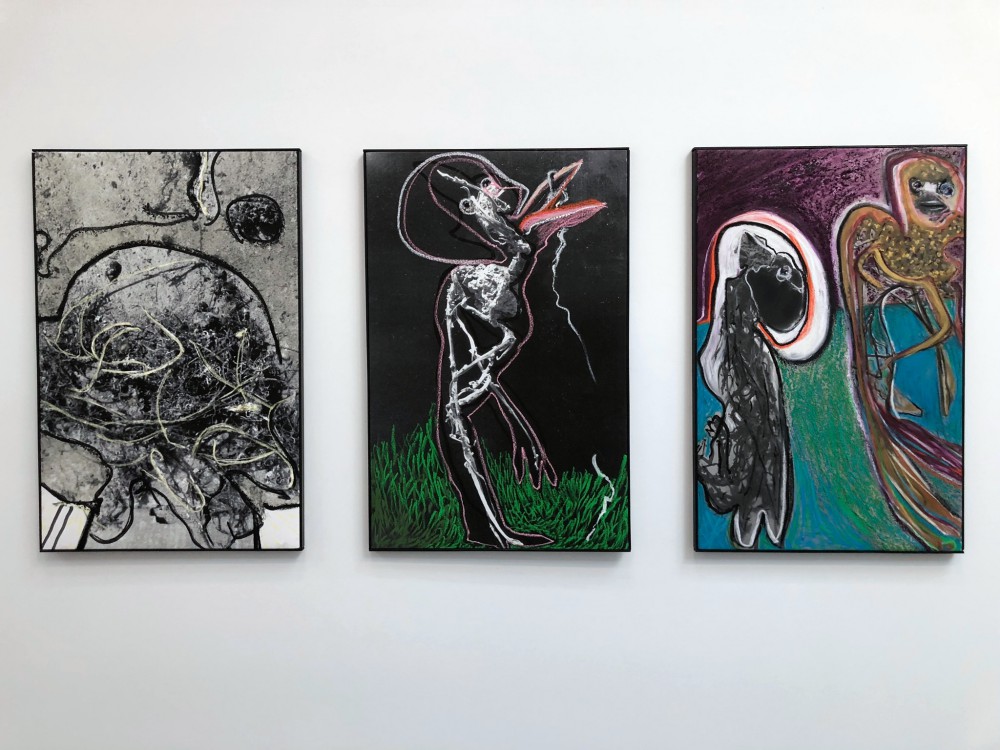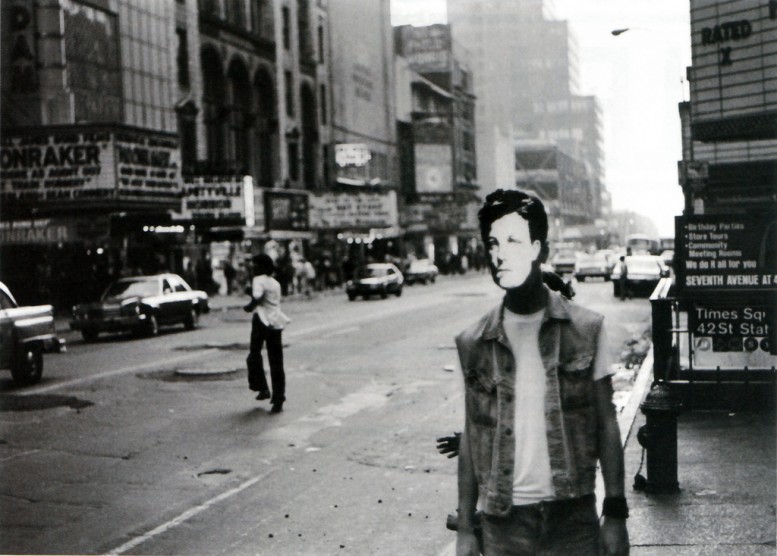Situated in the context of the first thrift store paintings altered by Danish artist Asger Jorn, Strategic Vandalism: The Legacy of Asger Jorn’s Modifications Paintings is a group show of over 30 prominent international artists investigating multifarious appropriation methods spanning from the mid-1960s to the flourishing techniques of the 1980s, up to the present day. Strategic Vandalism: The Legacy of Asger Jorn’s Modification Paintings features works by Enrico Baj, Marcel Duchamp, Max Ernst, Hans-Peter Feldmann, Vidya Gastaldon, Wade Guyton/Stephen Prina, Rachel Harrison, Ray Johnson, Jacqueline de Jong, Asger Jorn, Mike Kelley, Martin Kippenberger, Per Kirkeby, Lee Krasner, Albert Oehlen, Francis Picabia, Stephen Prina, R.H. Quaytman, Arnulf Rainer, Julian Schnabel, Jim Shaw, Gedi Sibony, Alexis Smith, Daniel Spoerri, John Stezaker, Betty Tompkins, and David Wojnarowicz. Strategic Vandalism is on view through April 13 at Petzel Gallery 456 W 18th Street, New York. photographs by Adam Lehrer
The Life and Times of David Wojnarowicz
In December 2010, the National Portrait Gallery in Washington made headlines when it responded to protests from the Catholic League by voluntarily censoring an excerpt of David Wojnarowicz's A Fire in My Belly from its show on American portraiture. Why a work of art could stir such emotions is at the heart of Cynthia Carr's Fire in the Belly: The Life and Times of David Wojnarowicz

You Killed Me First
Nightmarish scenarios of violence, dramatic states of mind, and perverse sexual abysses – the films of the Cinema of Transgression that were consciously aimed at shock, provocation, and confrontation, bear witness to an extraordinary radicality. In the 1980s a group of filmmakers from the Lower East Side in New York went on a collision course with the conventions of American society. Transcending all moral or aesthetic boundaries, the low budget films reveal social hardship met with sociopolitical indifference. Sometimes shot with stolen camera equipment, the films contain strident analyses of life in the Lower East Side defined by criminality, brutality, drugs, AIDS, sex, and excess. On view at the KW Institute of Contemporary Art in Berlin, until April 9, is the first exhibition on the Cinema of Transgression.

